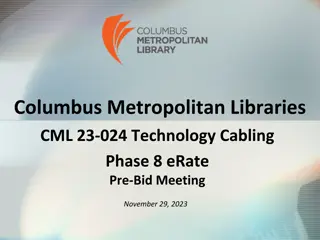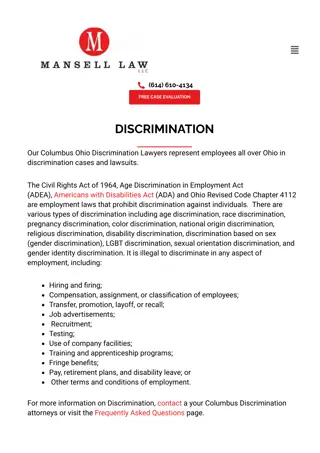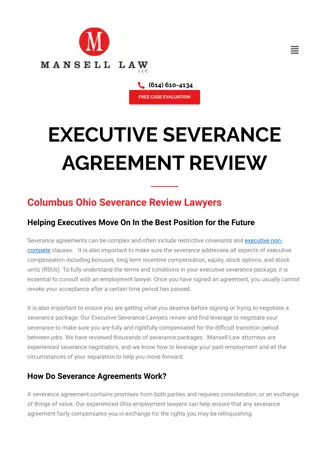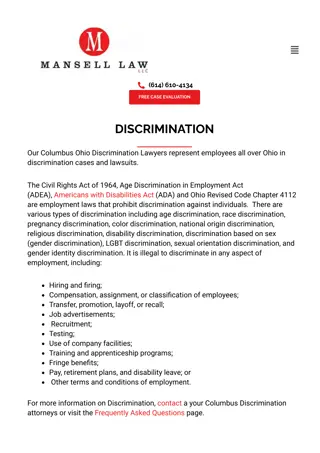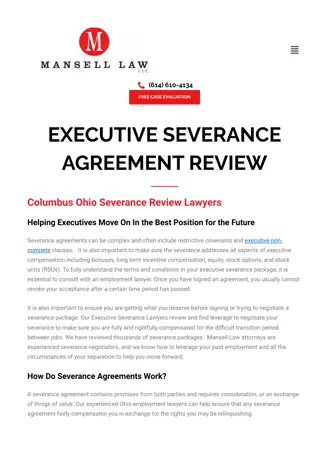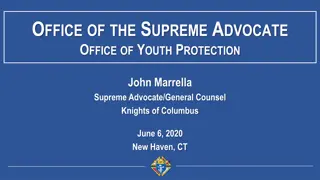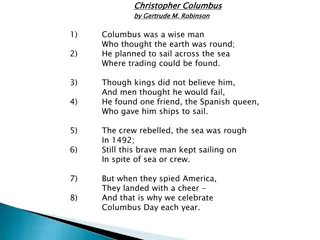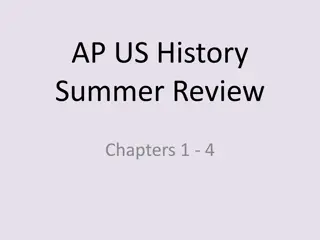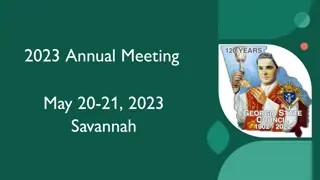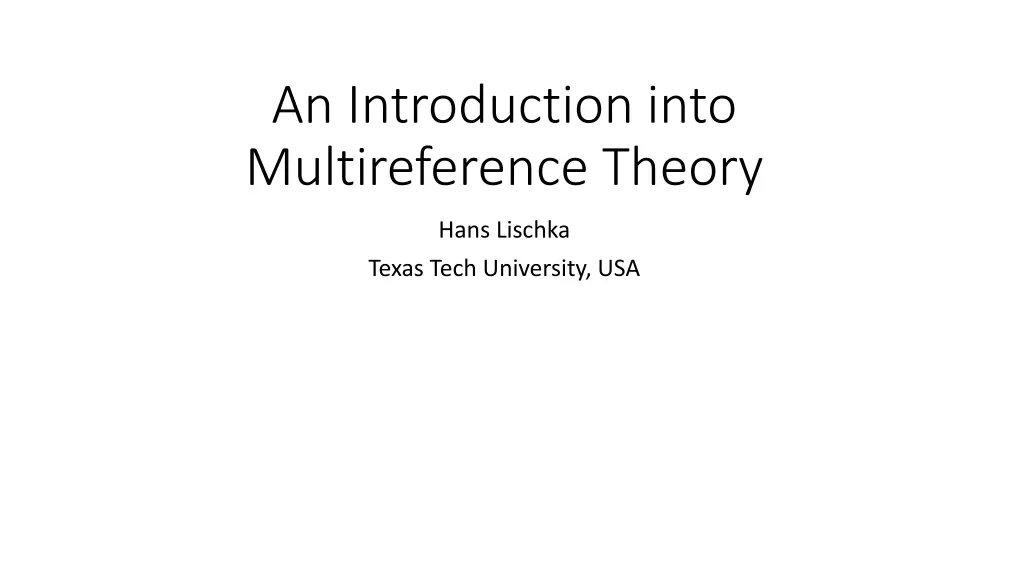
Understanding Multireference Theory in Quantum Chemistry
Explore the importance of multireference methods in quantum chemistry, including density functional theory, coupled cluster theory, and more. Delve into examples like bond dissociation of H2 and learn about single reference and multireference configuration interaction methods in analyzing electron excitations.
Download Presentation

Please find below an Image/Link to download the presentation.
The content on the website is provided AS IS for your information and personal use only. It may not be sold, licensed, or shared on other websites without obtaining consent from the author. If you encounter any issues during the download, it is possible that the publisher has removed the file from their server.
You are allowed to download the files provided on this website for personal or commercial use, subject to the condition that they are used lawfully. All files are the property of their respective owners.
The content on the website is provided AS IS for your information and personal use only. It may not be sold, licensed, or shared on other websites without obtaining consent from the author.
E N D
Presentation Transcript
An Introduction into Multireference Theory Hans Lischka Texas Tech University, USA
Why do we need Multireference Methods? Density functional theory (DFT) M ller-Plesset perturbation theory (MP2) Coupled cluster theory (CCSD(T)) Semiempirical methods Why more???
Simple Example: Bond Dissociation of H2 u u R u g + g g Occupied and virtual orbitals are well separated Occupied and virtual orbitals are quasi- degenerate
Generalization to Many Electrons Excitations into virtual orbitals Dynamic electron correlation Excitations into virtual orbitals Dynamic electron correlation Virtual orbitals orbitals Virtual LUMO orbitals electrons Active Four HOMO Static (nondynamic) Occupied orbitals Occupied orbitals electron correlation Internal orbitals ONE reference Closed shell MANY reference configuration configurations Closed shell Automatic assignment of orbitals possible Automatic assignment of orbitals NOT generally possible
Single Reference Configuration Interaction (SRCI) Excitation (substitution) of occupied orbitals by virtual ones Closed shell determinant 1 1 i i n n Excitation (or substitution) of occupied orbital i by virtual orbital a Singly excited configuration ia i a 1 1 a i n n Single-, double-, triple- m-tuple excitations ijk ij i , , a ab abc Method of configuration interaction (CI): + = a i , + + j , c c c a i a ab ij ab ij Variation principle (Ritz) is used to determine the coefficients and the energy SR C 0 0 I i , b , i a Note: Orbitals are usually taken from SCF calculation
Multireference Configuration Interaction (MRCI) Orbital scheme 1 i , = N Reference wave function 0: m-tuple excitations from into the virtual orbitals creates a set of configurations { I} = I CI MR orbitals Virtual N ref 1 i ref orbitals Active Ic Application of the Ritz variation principle leads to the MR-CI method. Standard approach: inclusion of single (S) and double (D) excitations N S k k l k l = Closed shell ref = + + ref ref S l D m D m c c c MRCI 1 m
Excitation scheme: refdocc active active virtual refdocc virtual active active
Multiconfiguration SCF (MCSCF) Approach used to compute molecular orbitals (MOs) for MRCI Independent calculations Wavefunction as in MRCI: N c = In many cases the MCSCF expansion will be identical to the reference space of MRCI Important: the configurations are constructed from MOs, the MOs are expanded in a basis set (like SCF MOs) N d = MCSCF = MCSCF k MCSCF k MCSCF 1 k bas = i i 1 MCSCF kc Simultaneous optimization of the wavefunction expansion coefficients and MO coefficients i d
Reference space Energy, CI coefficents MRCI MO integrals AO MO transformation MO coeff. Active space MCSCF AO integrals Molecular geometry, basis set Compute AO integrals
Types of MRCI: uncontracted or contracted N ref = + + ref k ref k S l S l D m D m c c c MRCI = 1 k l m Free variation, more flexible, more expensive Contraction, computationally faster Truncation of MRCI leads to size extensivity errors: correlation energy does not scale correctly with size of the system MR averaged quadratic coupled cluster MR-AQCC) method: size extensivity corrections
Ritz Variational Principle = Schr dinger equation H E N CI = CI expansion c k k = 1 k N N CI CI Multiply from the left with l and integrate = c H c E k k k k = = 1 1 k k N N = = using and CI CI = c H c E l k kl k l k k l k H H = = 1 1 k k kl l k N CI c = Hc E = H c E c lk k l = 1 k
Strategy for Multibillion CI calculations Solving for individual eigenstates: Davidson subspace method 1) Projection of the Hamiltonian matrix H into a set of an increasing number of subspace expansion vectors vi leading to smaller matrices and solve the smaller eigenvalue problems until convergence is achieved. H = v Hv H t s st t The main computational step is the matrix-vector product wj = Hvj. Direct CI (Roos): on-the-fly calculation of the contributions to the matrix-vector product 1) E. R. Davidson, J. Comp. Physics 17, 87, 1975
Classification and Organization of Different Terms = = + st ij st ijkl H H a h b g st s t ij ijkl ij ijkl Indices i,j,k,l run over the number of orbitals. = = and 1/ are the one- and two-electron integrals h h g 12 r ij i j ijkl i k j l st ij st ijkl and and are coupling coefficients. a b The matrix-vector product can be written as = + st ij st ij w a h v b g v s ij t ijkl t t ij t ijkl
Calculation of coupling coefficient using the Graphical Unitary Group Approach (GUGA)1,2) Graphical representation of a Distinct Row Table (DRT) Reference configurations in red Inactive (reference doubly occupied) Active (variable occupation in the reference) External (virtual) orbitals: only singles and doubles 1)Paldus, J., J. Chem. Phys. 61, 5321-5330, 1974 Shavitt, I., in: The Unitary Group for the Evaluation of Electronic Energy 2)Matrix Elements, Lecture Notes in Chemistry, vol. 22 (ed. J. Hinze), 51 99. Berlin: Springer, 1981
Step Vector di = 0 orbital i is unoccupied (uo) di = 1,2 orbital i is singly occupied (so) di = 3 orbital i is doubly occupied (do) Example: Orbital 1 2 3 4 5 6 Step vector 1 0 3 1 0 2 so uo do so uo so
The internal (active + closed shell) part of the graph is complicated, but relatively small in comparison to the virtual (external) space. The graph for the external is space is very simple due to the fact that we allow only double excitations. Moreover, its structure is independent of the internal part. Respective loops (coupling elements) can be computed once and for all. The interface between internal and external space is given by the vertices Z (0-excitations), Y (single- excitations), X (double excitations, triplet coupling) and W (double excitations, singlet coupling)
The loops are split into an internal part and into an external one. The internal part is computed explicitly and either stored on a file (formula file) or recomputed every Davidson iteration. The external part is added on-the-fly when the total coupling elements are computed. The two-electron integrals are sorted according to the number of internal indices: all (four)-internal, three-internal, two-internal, one internal and all- external.
Analytic MRCI energy Gradients Basic formalism: R. Shepard, H. Lischka, P. G. Szalay, T. Kovar and M. Ernzerhof, J. Chem. Phys. 96, 2085, 1992 Applicable to general MR wavefunctions Extension to excited states H. Lischka, M. Dallos and R. Shepard Mol. Phys. 100, 1647, 2002 Based on state-averaged MCSCF calculation
Conical Intersection of Energy Surfaces Conical intersection Branching space Intersection space MXS1 MXS2 MXS3 ( ) E E H q = = x x C C , t I 1 2 1 2 II q Example: Ethylene dimerization Search for minima on the crossing seam (MXS) Conical Intersections, Electronic Structure, Dynamics & Spectroscopy W. Domcke, D. R. Yarkony and H. K ppel, World Scientific 2004 D. R. Yarkony, J. Phys. Chem. A 101, 4263, 1997
References P. G. Szalay, Th. M ller, G. Gidofalvi, H. Lischka and R. Shepard Multiconfiguration Self-Consistent Field and Multireference Configuration Interaction Methods and Applications Chem. Rev. 112 (2012) 108-181 H. Lischka, D. Nachtigallova , A. J. A. Aquino, P. G. Szalay, F. Plasser, F. B. C. Machado, and M. Barbatti Multireference Approaches for Excited States of Molecules Chem. Rev. 118 (2018) 7293-7361 R. Lindh, L. Gonzalez Quantum Chemistry and Dynamics of Excited States: Methods and Applications, John Wiley&Sons Ltd, Hoboken, NJ, USA, 2021: F. Plasser, H. Lischka Multireference Configuration Interaction, p. 277-297



